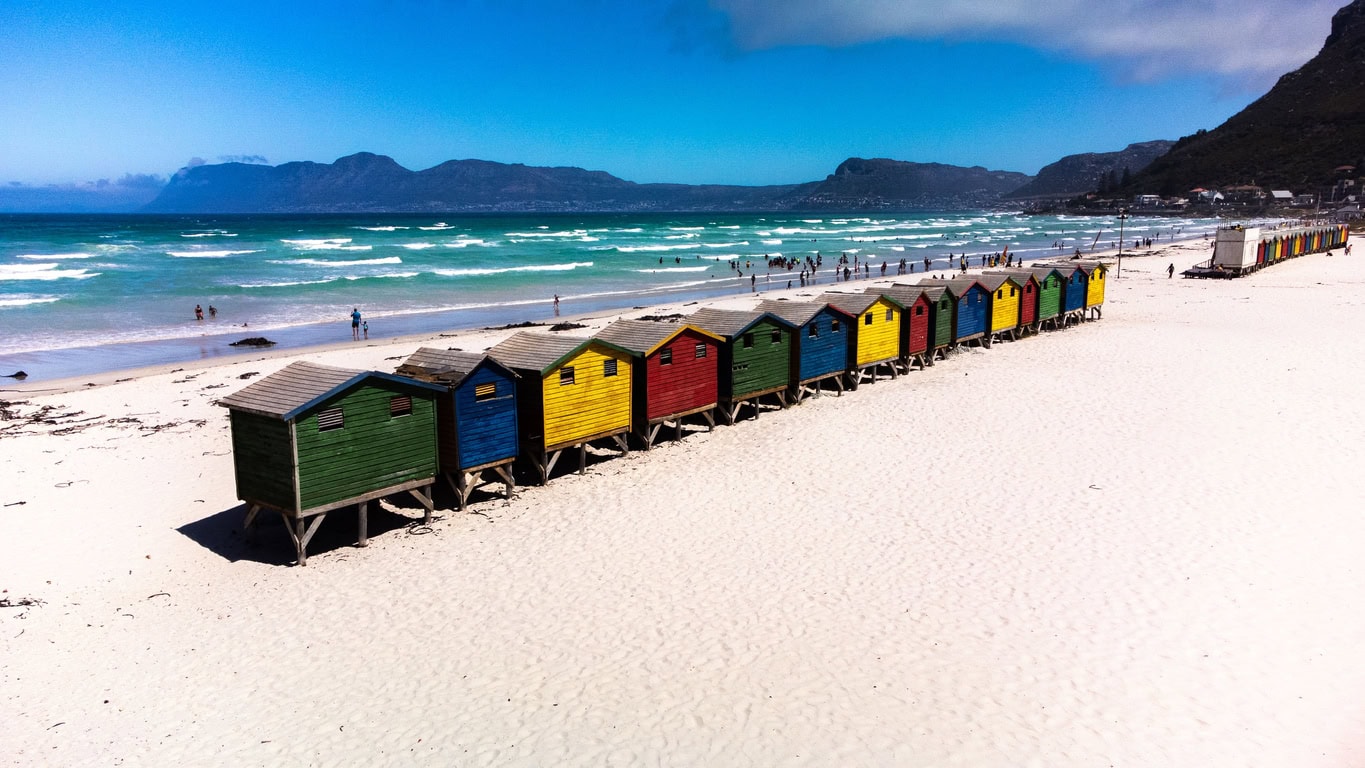Cape Town is a vibrant city with diverse neighbourhoods and stunning landscapes, each offering unique experiences and attractions. Here’s a detailed guide to the key areas within Cape Town and what makes them special:
1. City Bowl
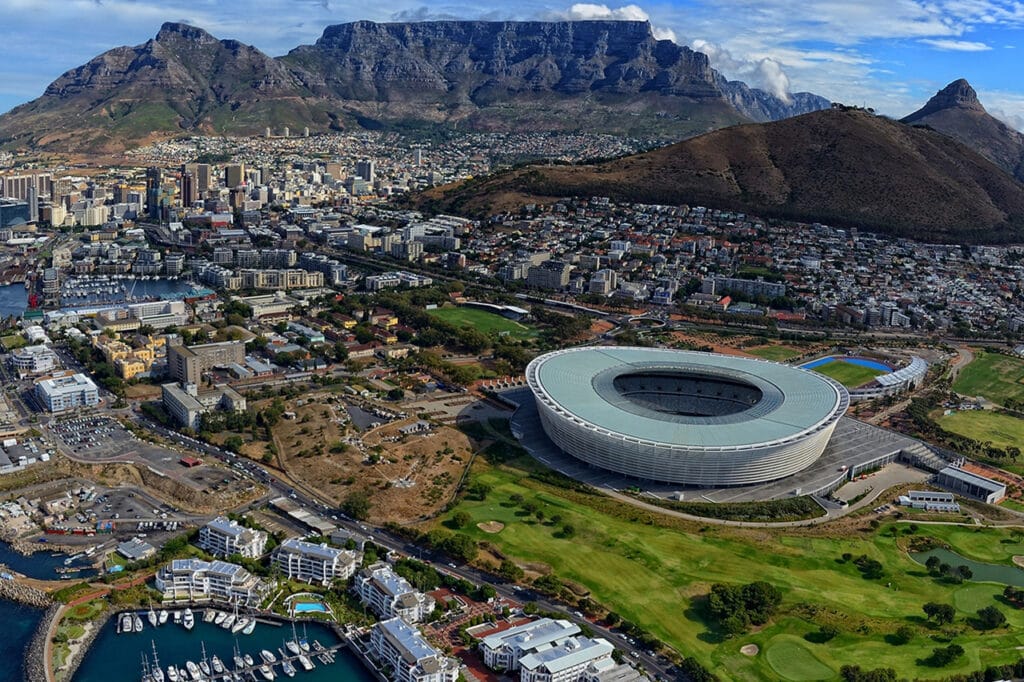
Overview: The City Bowl is the bustling heart of Cape Town, located between Table Mountain and the harbour. It’s the perfect base for exploring the city’s vibrant culture, history, and nightlife.
Key Highlights: The iconic Table Mountain offers panoramic views of the city and beyond. The Table Mountain Aerial Cableway provides an easy ascent to the top, where visitors can enjoy hiking trails, spectacular views, and a variety of flora and fauna.
The V&A Waterfront, a bustling harbour, combines shopping, dining, and entertainment with stunning views and is also the departure point for Robben Island tours.
Exploring the colourful streets of Bo-Kaap, a historic neighbourhood known for its vibrant houses and rich Cape Malay culture, is a must.
Unique Facts: Table Mountain is one of the New Seven Wonders of Nature and a UNESCO World Heritage Site. The V&A Waterfront attracts more than 24 million visitors annually, making it one of Africa’s most-visited destinations. Bo-Kaap is home to the oldest mosque in South Africa, Auwal Mosque, built in 1794.
2. Atlantic Seaboard
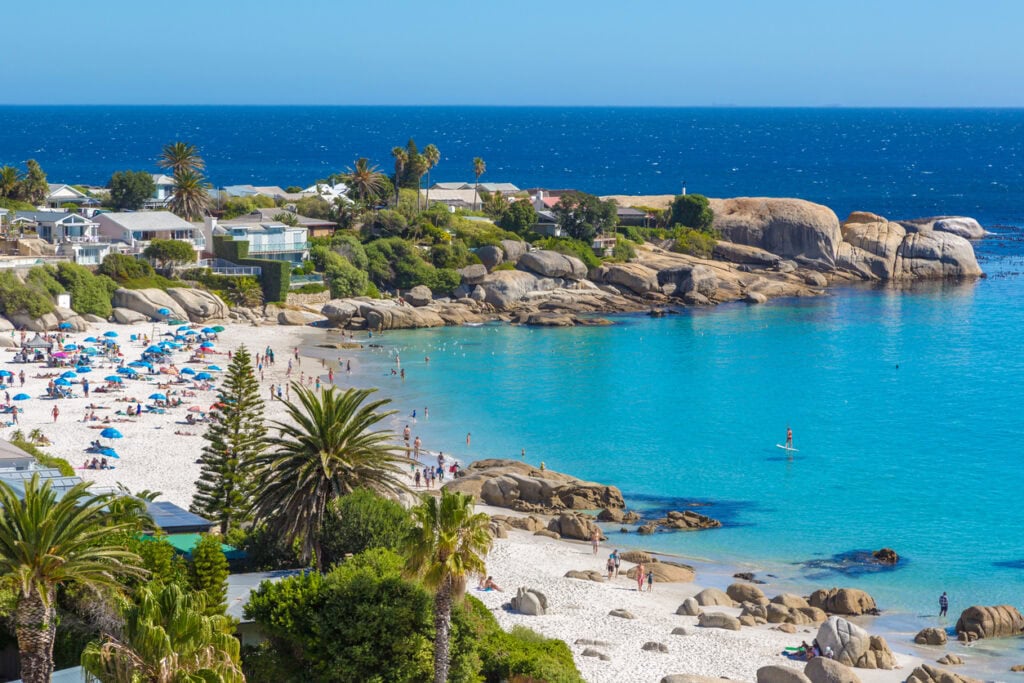
Overview: The Atlantic Seaboard, also known as Cape Town’s “Riviera,” stretches from the V&A Waterfront to Hout Bay, offering stunning coastal views and upscale beachside neighbourhoods.
Key Highlights: Camps Bay is famous for its beautiful powdery beach, vibrant nightlife, and trendy cafes and restaurants. Clifton Beaches, four pristine beaches known for their clear waters and white sands, are perfect for sunbathing and picnicking. The Sea Point Promenade offers a scenic walk or bike ride along the coastline, with views of the Atlantic Ocean and public art installations.
Unique Facts: Camps Bay Beach is a Blue Flag beach, recognized for its cleanliness and safety. Clifton’s beaches are divided into four coves, each offering a slightly different vibe, from family-friendly sporty vibes of Clifton first, to Clifton third which is a favourite for LGBTQ+ couples. The Sea Point Promenade is a popular stroll, loved for its relaxed atmosphere and stunning sunsets.
3. Cape Peninsula
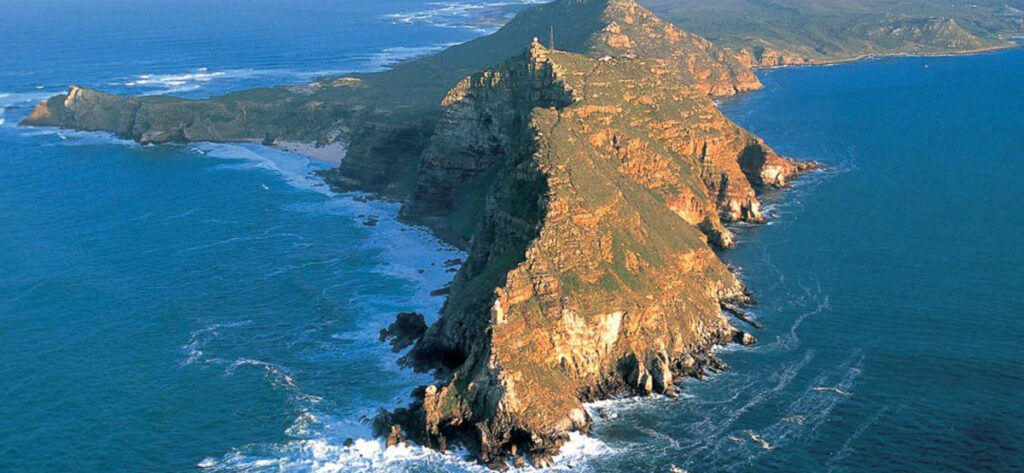
Overview: The Cape Peninsula is a dramatic landscape of rugged cliffs, sandy beaches, and scenic vistas, offering some of the best natural attractions in the region.
Key Highlights: Cape Point, located at the southern tip of the Cape Peninsula, provides breathtaking views and a historic lighthouse. Boulders Beach is famous for its colony of African penguins, offering unique wildlife encounters and picturesque views. Chapman’s Peak Drive is one of the most scenic coastal drives in the world, offering stunning views of the ocean and mountains.
Unique Facts: This region is part of the Cape Floral Kingdom, one of the world’s six floral kingdoms, known for its incredible biodiversity with many plant species found nowhere else on Earth. The Peninsula is also a hotspot for marine biodiversity, including sightings of Southern Right Whales during migration season. The area’s unique geography creates a microclimate that supports diverse ecosystems, from fynbos vegetation to rich marine life.
4. Southern Suburbs
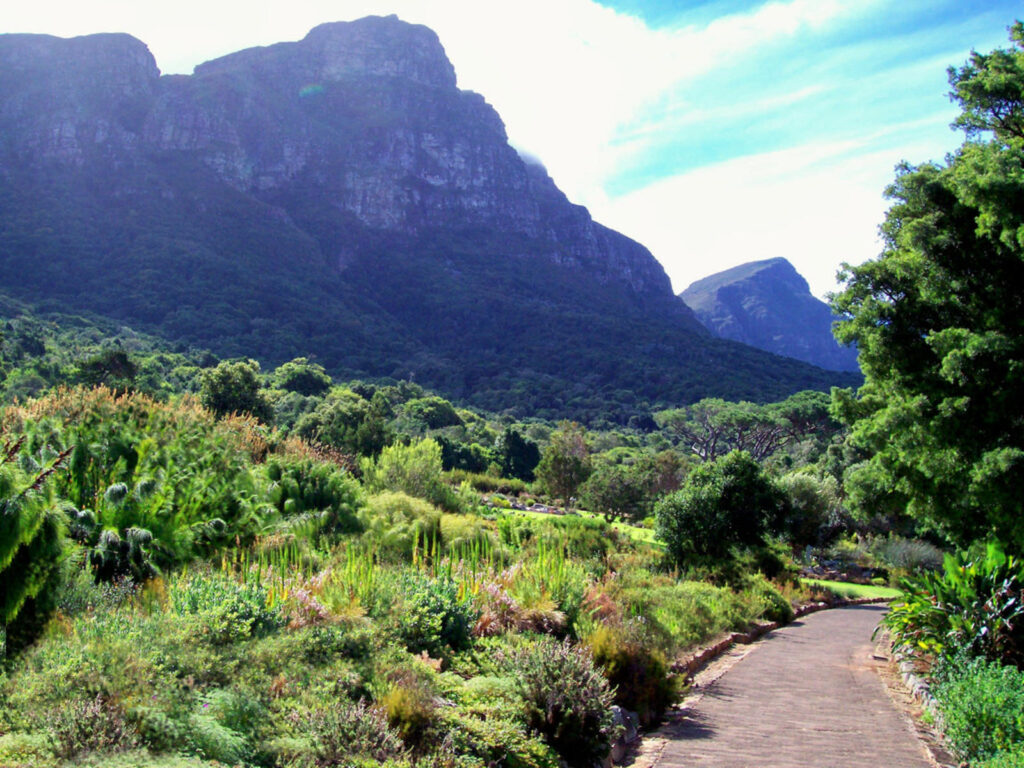
Overview: The Southern Suburbs offer a more relaxed and leafy environment, perfect for nature lovers and those looking to explore historic estates and gardens.
Key Highlights: Kirstenbosch Botanical Gardens, set against the eastern slopes of Table Mountain, feature a stunning variety of indigenous plants.
The Constantia Wine Route allows you to explore South Africa’s oldest wine-producing region, home to some of the world’s best vineyards and historic wine estates like Groot Constantia and Buitenverwachting.
Newlands offers refreshing hikes in Newlands Forest or the excitement of rugby or cricket matches at the iconic Newlands Stadium.
Unique Facts: Kirstenbosch is the first botanical garden in the world to be included within a natural World Heritage Site. The Constantia Wine Route dates back to 1685 and includes the famous Groot Constantia, the oldest wine estate in South Africa. Newlands is known as the “green heart” of Cape Town due to its lush, forested areas.
5. Winelands
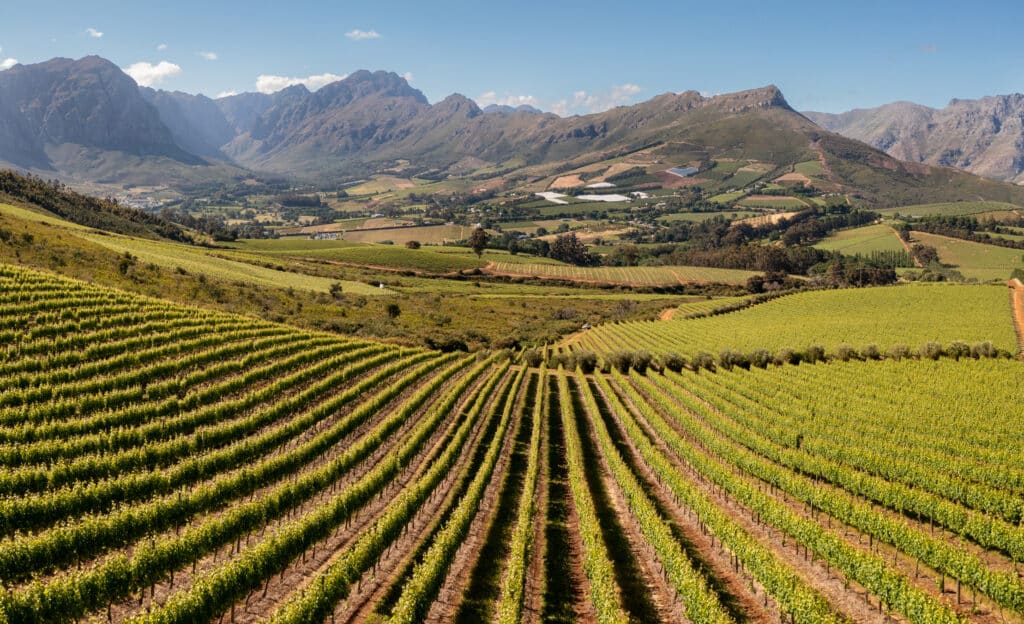
Overview: Just a short drive from Cape Town, the Cape Winelands offer picturesque vineyards, historic wine estates, and some of the finest wines in the world.
Key Highlights: Stellenbosch is known for its historic buildings, oak-lined streets, and top-rated vineyards. Franschhoek, a charming town with a strong French influence, is famous for its gourmet cuisine and award-winning wines. Paarl, home to the iconic Paarl Rock, boasts several renowned wine estates.
Unique Facts: Stellenbosch University is one of the leading research universities in South Africa and the oldest university in the country. Franschhoek was founded by French Huguenots in 1688, and its name means “French Corner” in Dutch. Paarl is the third oldest European settlement in South Africa, after Cape Town and Stellenbosch.
These regions within Cape Town each offer unique experiences and opportunities to see diverse attractions. To find out more about each area and plan your perfect holiday, explore our detailed guides linked above. Cape Town’s blend of vibrant city life, stunning natural beauty, and rich cultural heritage makes it a compelling destination for every traveller.






